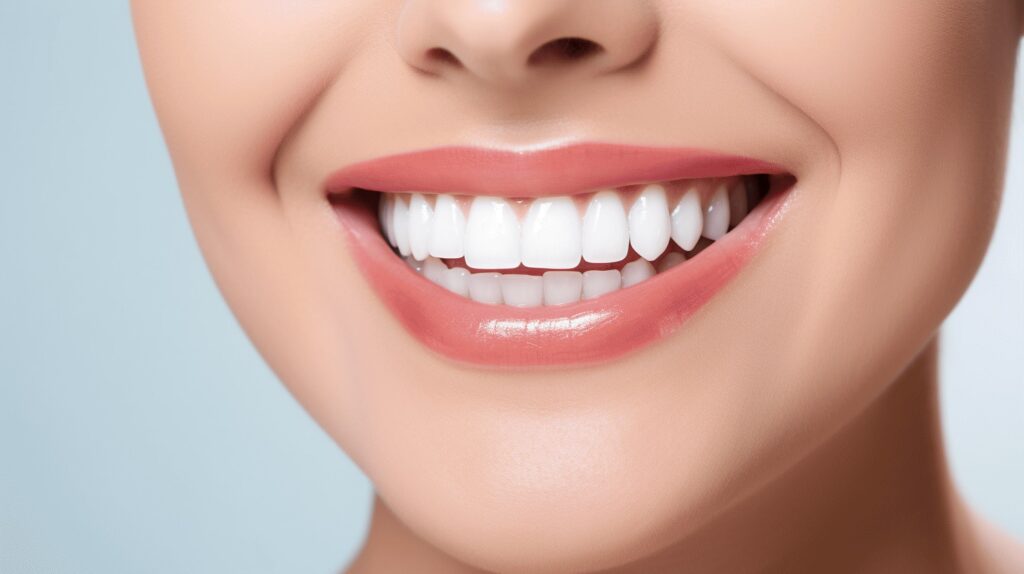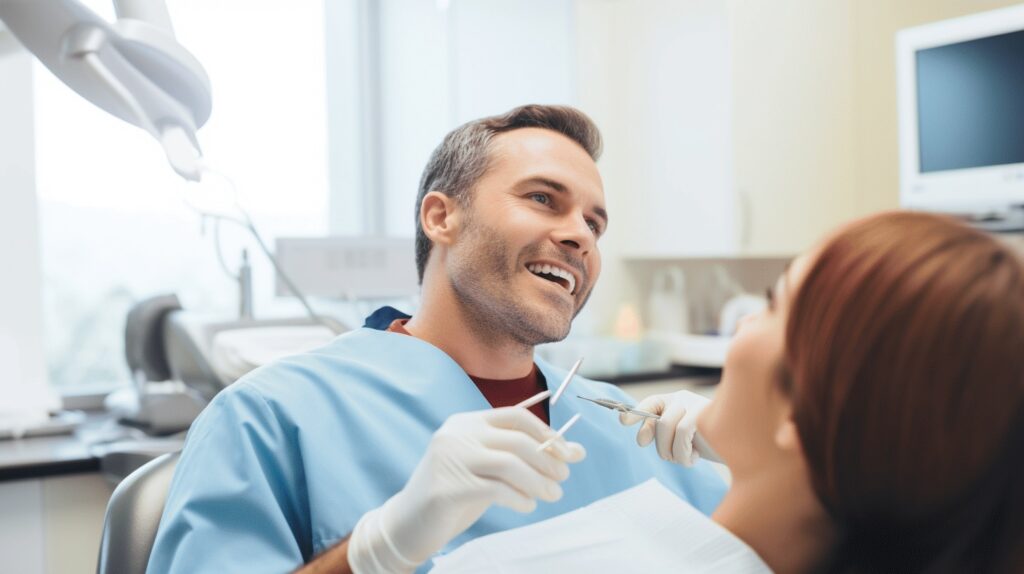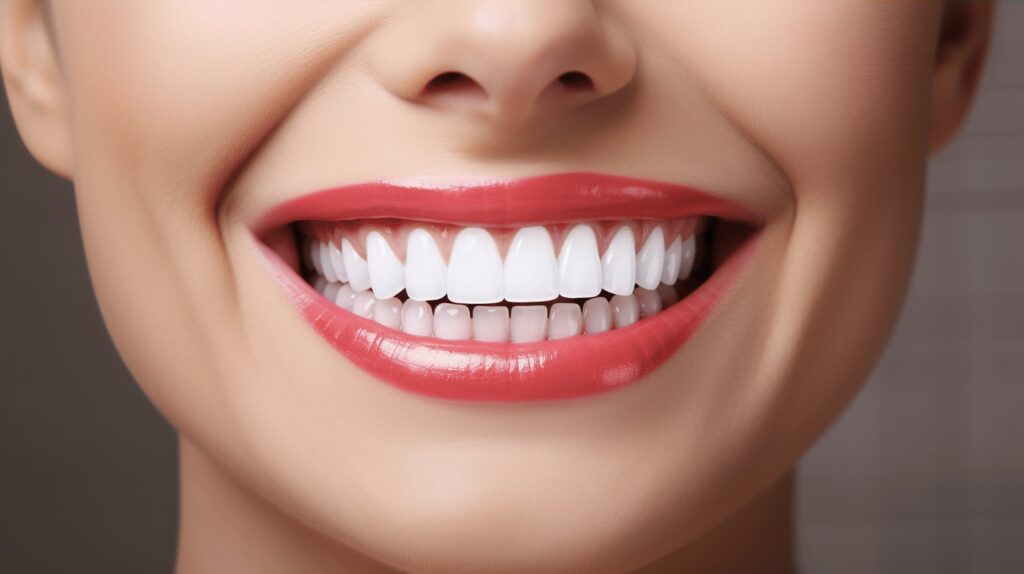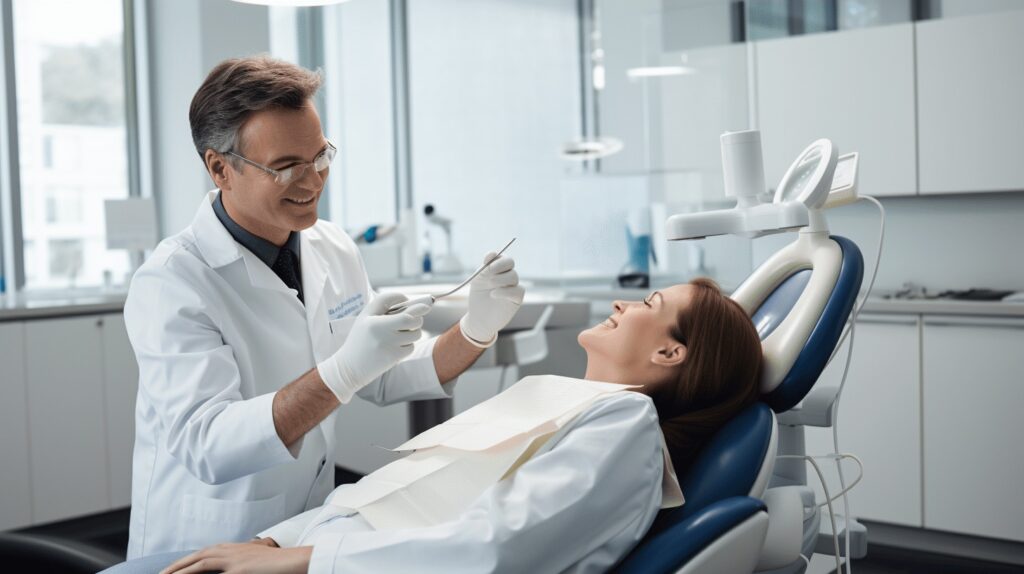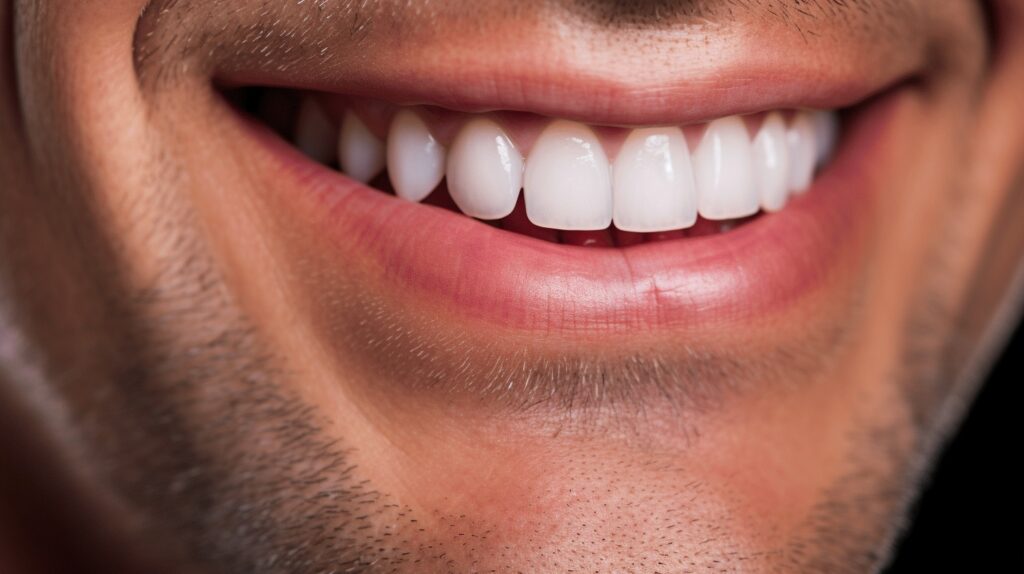Say goodbye to pesky cavities and tooth loss! 👋 Welcome to the informative world of preventative dentistry where we equip you with the knowledge to keep your pearly whites in pristine condition.
Our smiles are a big part of our identities, often the first feature people notice. Therefore, it’s crucial to maintain their radiance, and preventative dentistry plays a pivotal role in this.
We take you through the prevalence of dental issues, both in children and adults, and how preventative dentistry can ensure their mitigation.
Advanced techniques, antibacterial agents, caries vaccines, and the use of fluorides are just some of the fascinating subjects we dive into. Taking things a step further, we explore revolutionary concepts such as tele-dentistry, AI, and digital diagnostics that are transforming the dental landscape to be more accessible for all.
In addition, we’ll delve into the benefits of preventive dentistry. Its importance extends beyond oral hygiene; it plays a significant role in maintaining overall health. By the end of this article, we hope to impress upon you why preventative dentistry is a long-term investment that leads to a lifetime of healthy smiles.😁
Buckle up as we embark on this exciting journey of dental discovery! Let’s turn the tide on tooth troubles and make dental diseases a thing of the past. Because with the right preventative measures, we can all flaunt our captivating smiles with confidence.😀🦷💖
Table of Contents
Prevalence of Dental Issues
When you flash a smile, your teeth take center stage. As such, it’s important to understand just how widespread dental issues are. We’ll be stepping into the oral health world today, shedding some light on dental caries in children, adults, and the elevated rates of tooth loss and cavities. There’s a sobering reality underneath these dazzling smiles!
Dental Caries in Children
Despite efforts for preventative dental care, our young ones aren’t spared. Approximately 13.2% of children aged 5-19 have untreated dental caries. That means a noteworthy number of the future generation is up against deflated self-esteem and discomfort or pain. If that isn’t disconcerting enough, over a quarter of kiddos between the ages of 2 and 5 have cavities. 😱 Are we astonished about the prevalence of these numbing numbers? Yes. But are we also full of hope for education and preventive measures? You bet!
Dental Caries in Adults
Moving towards adulthood doesn’t eliminate these oral obstacles, oh no. An estimated 25.9% of adults aged 20-44 have untreated dental caries, elevating the dental distress. The broader picture? Consider this staggering statistic: almost half of the global population (45% or 3.5 billion people to be precise!) suffer from oral diseases. This crisis extends far and wide, reaching every quiet corner of the earth.
Tooth Loss
Now, let’s take a moment to discuss tooth loss. You may think it’s a problem tucked safely into the realm of the elderly. But real data prompts us to reconsider: almost 7% of adults aged 20 or older have complete tooth loss. By age 60, tooth decay indeed becomes a widespread distress, affecting a whopping 91% of American adults.
Cavity Prevalence
Cavities, too, pose a prevalent problem. Nearly 80% of Americans will have at least one cavity by age 17, and more than a quarter of U.S. adults are walking around with untreated dental decay. Mouths agape yet? Ours too.
While many statistics mentioned can seem alarming, it’s crucial to keep in mind that awareness and early preventive measures can make a world of difference. After all, a whopping 75% of American adults plan to visit a dentist in the coming year, showing an informed society aiming to tackle these prevalent issues headlong. Now, isn’t that a reason to smile? 😊
(Well, except for the part about the COVID-19 pandemic leading to the closure of 198,000 dental offices. That’s decidedly less smile-inducing.)
In the face of these truths, we stand unwavering, committed to enlighten and engage. Together, we can counter the scourge of dental diseases and give everyone the chance to boast a healthy, beaming smile. Do we have a long road to traverse? Absolutely. Are we confident about making strides towards better oral health? Indeed! Keep smiling along, folks!
Advances in Preventive Dentistry
The field of dentistry, today, is transforming at a rapid pace, thanks to the advancements in science and technology. More than dealing with restorations, fillings, and extractions, dentistry’s focus has notably shifted towards prevention. Let’s delve deeper into some of the exciting advances in preventive dentistry, promising a future with stronger, healthier smiles.
Antibacterial and Antimicrobial Agents
In our pursuit of adequate oral hygiene, antibacterial and antimicrobial agents have emerged as veritable game-changers. These agents, often incorporated in mouthwashes and toothpastes, work tirelessly to guard our teeth against harmful bacteria, warding off the risk of plaque and gingivitis. Brushing twice a day might seem like a chore, but remember – these agents are putting in their army of molecular soldiers to ensure we are guarded against tooth decay and gum disease!
Caries Vaccines
Now, we’ve all heard of vaccines for mumps, measles, and pneumonia but imagine a vaccine for dental caries! A fascinating prospect for sure, caries vaccines are currently under study and are showing immense potential. By targeting specific bacteria known to cause tooth decay, these vaccines aim to significantly reduce the incidence of this pervasive dental issue. We should note, a vaccine isn’t a substitute for regular dental hygiene, though it adds another line of defense in maintaining oral health.
Fluorides
A long-known ally in the fight against cavities, the power of fluorides in preventive dentistry is undisputed. Typically found in our toothpastes and certain mouthwashes, fluorides function by strengthening the tooth enamel, making it more resistant to the acid produced by plaque bacteria. Additionally, they can also repair early stages of tooth decay. So, while we are impeccably brushing and flossing, it’s our good friend fluoride who is laying down the foundation for a robust set of teeth!
Sugar Substitutes
Remember those childhood days when a day without sweets was a day wasted? Sadly, our love for sugary delights often leads to a not-so-delightful affair with tooth decay. Enter: sugar substitutes, a viable preventive measure against dental decay. Substitutes like xylitol and erythritol offer the pleasures of sweet without subjecting our teeth to harm. It’s a win-win!
Ozone Treatment
While it might seem like something right out of a science fiction movie, ozone treatment for dental care is a reality. This non-invasive treatment method helps in sterilizing oral cavities and preventing dental caries. Plus, it’s also beneficial in managing gum diseases. Though it’s relatively new in the dental field, it’s paving the way for a future marked by minimized drilling and fewer cavities.
Embracing the advances in preventive dentistry, engaging in regular dental practices, and maintaining a balanced diet are crucial steps towards a healthier future – one where every smile is a testament to robust oral health. We are excited at these developments and believe preventive dentistry is the way forward in safeguarding our smiles, would you agree? 😀
Improving Access to Preventive Dentistry
Welcome to our smile-focused world where we’re all about maintaining that incredible beam of yours! 😁 Here, we have an unwavering belief that prevention is better than cure. Particularly in dentistry, prevention reigns supreme; it saves us from discomfort, time-consuming treatments, and hefty bills. That’s why policies prioritize improving access to preventive dental care for all. This care relies on several innovative techniques and technologies, which show how dental care has evolved over the years. Let’s explore them below.
Focus on Prevention
Did you know the best way to treat dental diseases is to avoid them in the first place? 🤔 It might sound obvious, but you’d be surprised at how prevention is often overlooked.
Here are few points to remember:
- Chewing sugar-free gum increases saliva, helping to neutralize the plaque acid that causes tooth decay.
- Regular tooth-brushing (At least twice a day) with fluoride toothpaste is your best bet against most dental problems.
- Regular dental visits are critical for early identification and treatment of potential oral health difficulties.
By making prevention a significant part of our oral health habits, we can effectively keep our gleaming smiles healthy and happy.
Tele-dentistry
Can’t get to the dental office? Here comes our superhero, Tele-dentistry! 😊 It allows remote consultations and oral health assessments, bringing expert dental care right to your fingertips. Tele-dentistry involves virtual consultation with your dentist from the comfort of your house, which helps keep your teeth in check without ever leaving your sofa. Quite nifty, right?
AI and Digital Diagnostics
Artificial Intelligence and digital diagnostics are like the dynamic duo of modern dentistry. 🚀 These marvels are now assisting our dentists in diagnosing oral diseases with improved accuracy and efficiency. Leveraging AI, dentists can detect subtle changes and early signs that might have been missed with traditional methods. Now, that’s what we call a smart smile!
3D Printing
Last but definitely not least, let’s touch on 3D Printing. It’s the talk of the town in the dental world, and for a good reason.✨ 3D printing is revolutionizing dental practices – from creating perfectly fitted dental appliances to designing detailed dental prosthetics. No more waiting for weeks! All it takes is a scan of your mouth and a great 3D printer to think ahead of the curve. Cool, isn’t it?
Together, we can encourage preventive measures in dental care by embracing these advancements and making them universally accessible. By giving everyone access to cutting-edge care, we’re empowering ourselves to wear our best smiles every day. Remember, a simple smile can change the world. So let’s make yours count. 😀
Benefits of Preventive Dentistry
We all know that prevention is better than cure, and this axiom holds true, especially when it comes to our oral health. In this regard, preventive dentistry shines as a beacon of proactive care, aiding us in maintaining overall oral health while simultaneously forestalling potential dental complications. Through regular visits and constant care, preventive dentistry can save us from unnecessary discomfort and hefty dental costs.
Let’s discuss the broad-spectrum benefits that preventive dentistry brings to the table.
Maintaining Good Oral Health
First and foremost, preventive dentistry helps us maintain excellent oral health. Regular dental check-ups and cleanings are at the heart of good dental hygiene. These visits allow dentists to assess our oral health, identify any issues in their early stages, and nip potential problems in the bud.
Moreover, your dentists will provide instructions tailored to your specific dental needs, empowering you to carry out effective oral hygiene practices at home. It’s an ongoing process, where commitment plays as crucial a role as the professional dental care received.
Preventing Gum Disease
Did you know gum diseases, such as gingivitis and periodontitis, can sneak up on you if not checked regularly? That’s right! However, preventive dentistry is our ally in this fight. Regular dental check-ups coupled with informed oral hygiene practices can prevent these issues from advancing into severe problems.
Preventive measures include routine dental cleanings to remove plaque and tartar build-up, as they are the primary culprits behind most gum diseases. So don’t underestimate the power of that refreshing post-dental cleaning feeling – it’s a clear sign of health and wellness!
Cavity Prevention
Remember how we used to dread getting a cavity filled up during our younger years? Well, preventive dentistry puts an end to those fears by offering effective cavity prevention techniques.
Some of these techniques involve the application of sealants on surfaces prone to cavities, fluoride treatments to strengthen tooth enamel, and most importantly, educating patients on best brushing and flossing practices. As the saying goes, knowledge is power, and in this case, it’s the power to ward off cavities!
Tooth Loss Prevention
Last but definitely not least, preventive dentistry is key in preventing tooth loss. Regular check-ups enable your dentist to detect early symptoms of dental diseases that could lead to tooth loss, such as decay or gum disease.
Remember, your teeth are meant to last a lifetime, and preventative dentistry is the best tool we’ve got to ensure they do. And don’t forget, those who smile more, rock more 😉!
Finally, we leave you with this comprehensive resource on preventive dentistry. Can’t wait to see you wear your healthy smile with pride! ✨
It’s an adventure leading to an irresistible smile – let’s walk this preventive dentistry path together!
Advancements in Pediatric Dentistry
When it comes to keeping the oral health of our little ones tip-top, pediatric dentistry certainly isn’t stuck in the Stone Age. The field has made remarkable strides, specifically in the development of advanced tools and technologies aimed at improved diagnosis, imaging, and treatment. Let’s probe a little deeper into these advancements, shall we?
Caries Detection Diagnostic/Imaging Tools
Tooth decay, or dental caries as we like to call it in the dental world, remains one of the most common diseases in children, but thanks to advancements in pediatric dentistry, spotting these nasty afflictions has become a breeze!
We’ve witnessed a revolution in diagnostic and imaging tools specifically designed for caries detection in children. These tools have significantly ramped up our ability to uncover even the most well-hidden caries. They use high-frequency sound waves or light-induced fluorescence to highlight the areas of decay. Now, that’s what we call lighting up children’s health!
- They make detecting caries more accurate and timely
- They provide a non-invasive and painless method of detection
- They map exactly where the decay is
In a nutshell, these advancements ensure that dental caries doesn’t stand a chance in the face of modern pediatric dentistry. Nipping the problem early in the bud means less invasive treatment and happier, more confident smiles!
Intraoral Cameras
Turning to the realm of imaging, intraoral cameras are another development that has been a true game-changer. Think about a high-resolution camera shrunk down to fit comfortably inside a mouth, offering vivid, magnified, real-time images to both us and the patient. That’s right, with these nifty tools, kids can take a live tour of the inside of their mouths!
Using intraoral cameras, we can:
- Improve our visualization of teeth and gum condition
- Help children understand their oral health better
- Enable early detection of dental issues
It is safe to say that these advancements not only boost our capabilities to treat but also empower children to be enthusiastic participants in their oral health journey. Put those toothy smiles on because pediatric dentistry is on a supercharged journey towards a healthier future! 🦷
Breakthroughs in Pain Management
Dental appointments can often bring about feelings of unease and discomfort primarily due to the misrepresented fear of pain. However, modern pain management in dentistry has seen significant advancements, transforming dental visits into a more pleasant experience.
Dentistry has evolved significantly in the last couple of decades and the methods of numbing pain are no exception. From the use of local anesthesia to the addition of sedatives, pain management methods have allowed us to administer dental treatments easily without causing discomfort.
Here are a few remarkable improvements:
- Pharmacological advancements: The expanding spectrum of oral and topical anesthetics, analgesics, and sedatives have made dental procedures virtually painless. From novocaine to safer lidocaine, and to the more effective articaine; the evolution of local anesthetics has been monumental.
- Non-pharmacological methods: Techniques like the Dental Vibe, which provides gentle vibrations to distract the patient, or the magic wand, a computer-assisted anesthesia system, control the delivery rate of anesthetic, making procedures smoother without causing pain.
- Sedation Dentistry: For procedures that may cause higher levels of distress, we opt for sedation dentistry. This includes options like oral, nitrous oxide, or intravenous sedation. This not only eliminates pain but also helps to calm anxiety and promote relaxation.
As quoted by renowned dentist, Dr. Harold Stockton, “Pain should never be a part of your dental visit. Modern dentistry provides options to ensure your comfort at all times.”
Through this, we can safely say that the advances in pain management have made it possible to provide comfortable and pain-free dental care. This progress has drastically changed the outlook of patients and has even encouraged regular dental check-ups. So, the next time you think of a dental visit, remember that it’s no longer synonymous with pain.
Visit Wilshire Smile Studio and call (323) DEN-TIST (336-8478) for a free consultation.
Frequently Asked Questions
- What are some preventative dentistry techniques for stronger teeth? Some preventative dentistry techniques for stronger teeth include regular brushing and flossing, maintaining a healthy diet, avoiding tobacco and excessive alcohol consumption, wearing a mouthguard during sports activities, and scheduling regular dental check-ups and cleanings.
- How often should I brush my teeth for optimal dental health? It is recommended to brush your teeth at least twice a day, using a fluoride toothpaste and a soft-bristled toothbrush. Brushing should be done for a minimum of two minutes each time.
- Is flossing important for maintaining strong teeth? Yes, flossing is crucial for maintaining strong and healthy teeth. It helps remove food particles and plaque from between the teeth and along the gumline, which regular brushing cannot reach.
- Can a healthy diet contribute to stronger teeth? Absolutely! A healthy diet plays a vital role in maintaining strong teeth. Avoid excessive sugar and acidic foods and opt for a balanced diet rich in fruits, vegetables, whole grains, lean proteins, and dairy products to provide essential nutrients for healthy teeth and gums.
- How often should I visit the dentist for check-ups and cleanings? It is recommended to visit the dentist every six months for regular check-ups and cleanings. However, your dentist may suggest more frequent visits based on your oral health needs.


